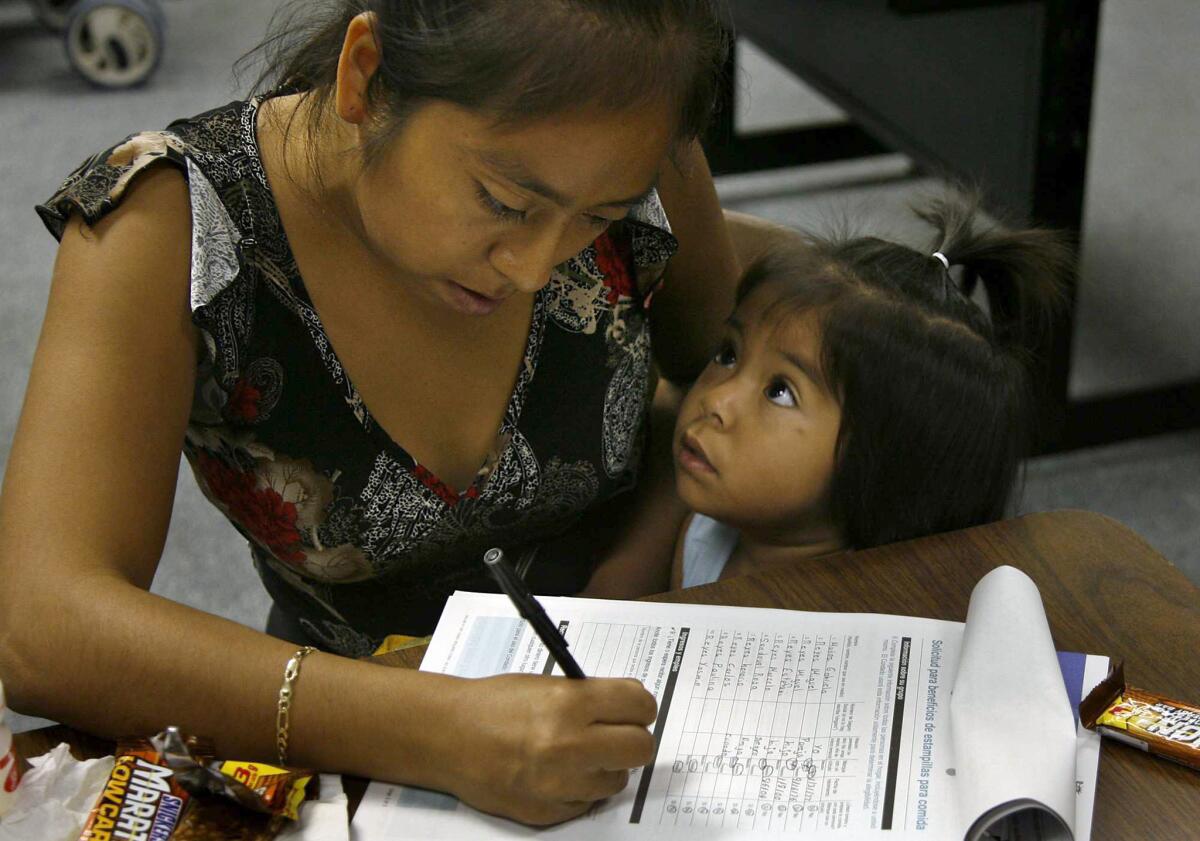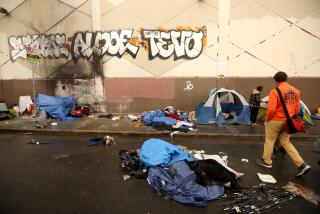U.S. poverty higher, California highest, when housing costs added

An alternative way of measuring poverty shows that nearly 2.8 million more people are struggling across the country than officially calculated, the U.S. Census Bureau reports – and California has by far the biggest share of people in poverty, eclipsing states such as Mississippi and Louisiana.
The alternative yardstick, known as the supplemental poverty measure, is different from the official poverty rate in a few key ways: It takes tax credits and other government benefits into account. It also counts necessary expenses such as child care and out-of-pocket medical costs.
In addition, it considers the different costs of housing from state to state. That makes a big difference in California, where the broader measure counts more than 8.9 million people living in poverty between 2010 and 2012 -- far higher than the 6.2 million tallied the official way.
The alternative measure found that 16% of Americans, nearly 50 million, are living in poverty, versus the 15.1%, or roughly 47 million officially counted.
The official poverty line is the same “whether you live in New York City or Kansas,” said Marybeth Mattingly, director of research on vulnerable families at the Carsey Institute at the University of New Hampshire. “This looks at what housing actually costs where you live.”
Using the alternative measure, California had the highest poverty in the country between 2010 and 2012 – 23.8% -- followed by the District of Columbia and Nevada. The official measure ranked Louisiana, Mississippi and New Mexico at the top during that period.
The alternative measure also shows steeper poverty among immigrants and the elderly than officially measured. The poverty rate among Asian Americans, officially measured at 11.8%, jumps to 16.7% using the alternative measure.
By either measure, poverty has stagnated. Earlier this year, the Census Bureau reported that the official poverty rate was virtually the same in 2011 and 2012. The alternative also shows little change in those years, a reflection of continued hardship in the wake of the recession.
“Unemployment is still huge. We’ve cut housing. We’ve cut Head Start. We’ve cut nutrition programs,” said Ron Haskins, co-director of the Brookings Center on Children and Families. “Now it’s food stamps.... That’ll show up in these numbers next year.”
ALSO:
Illinois lawmakers approve gay marriage
Moderates win the day in off-year election
Missouri murder conviction based on dreams is tossed
More to Read
Sign up for Essential California
The most important California stories and recommendations in your inbox every morning.
You may occasionally receive promotional content from the Los Angeles Times.











